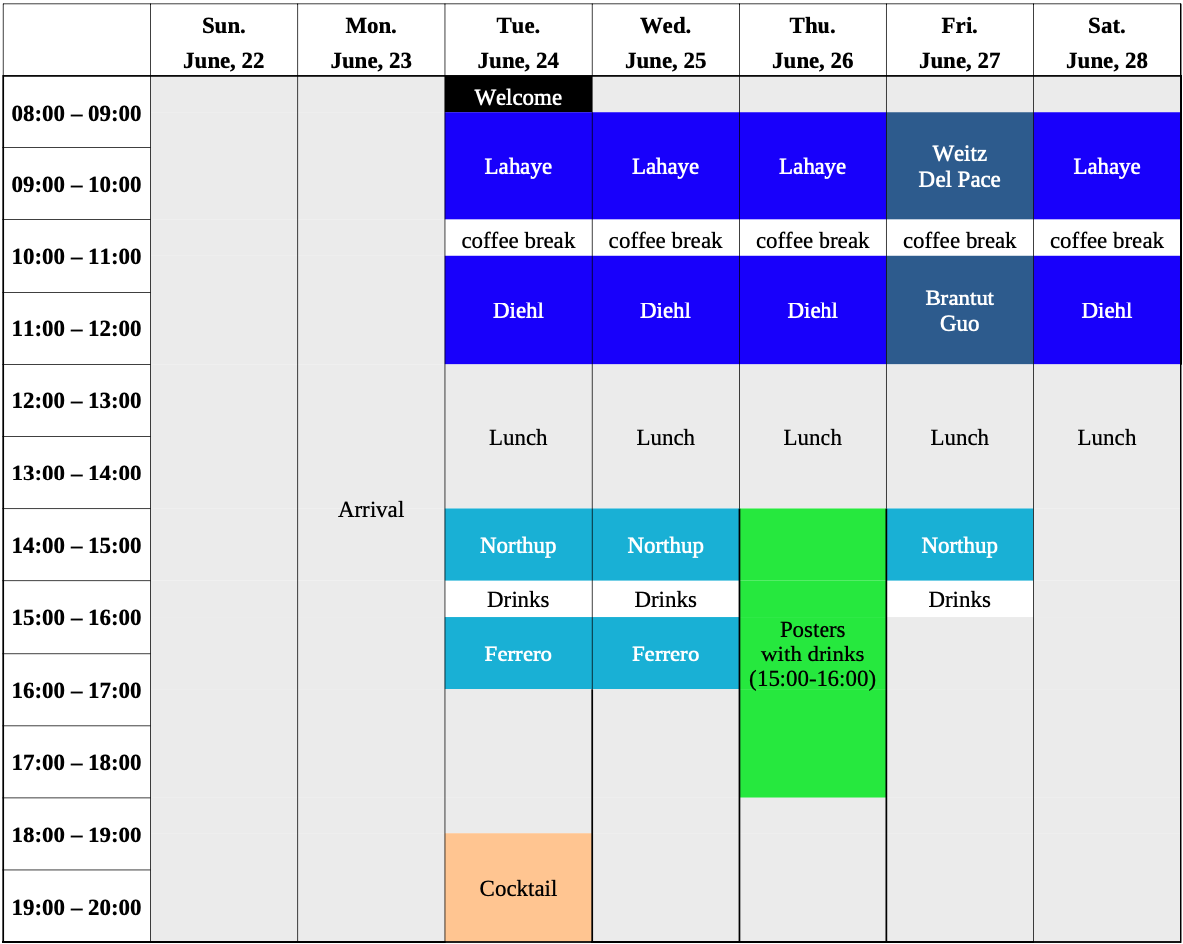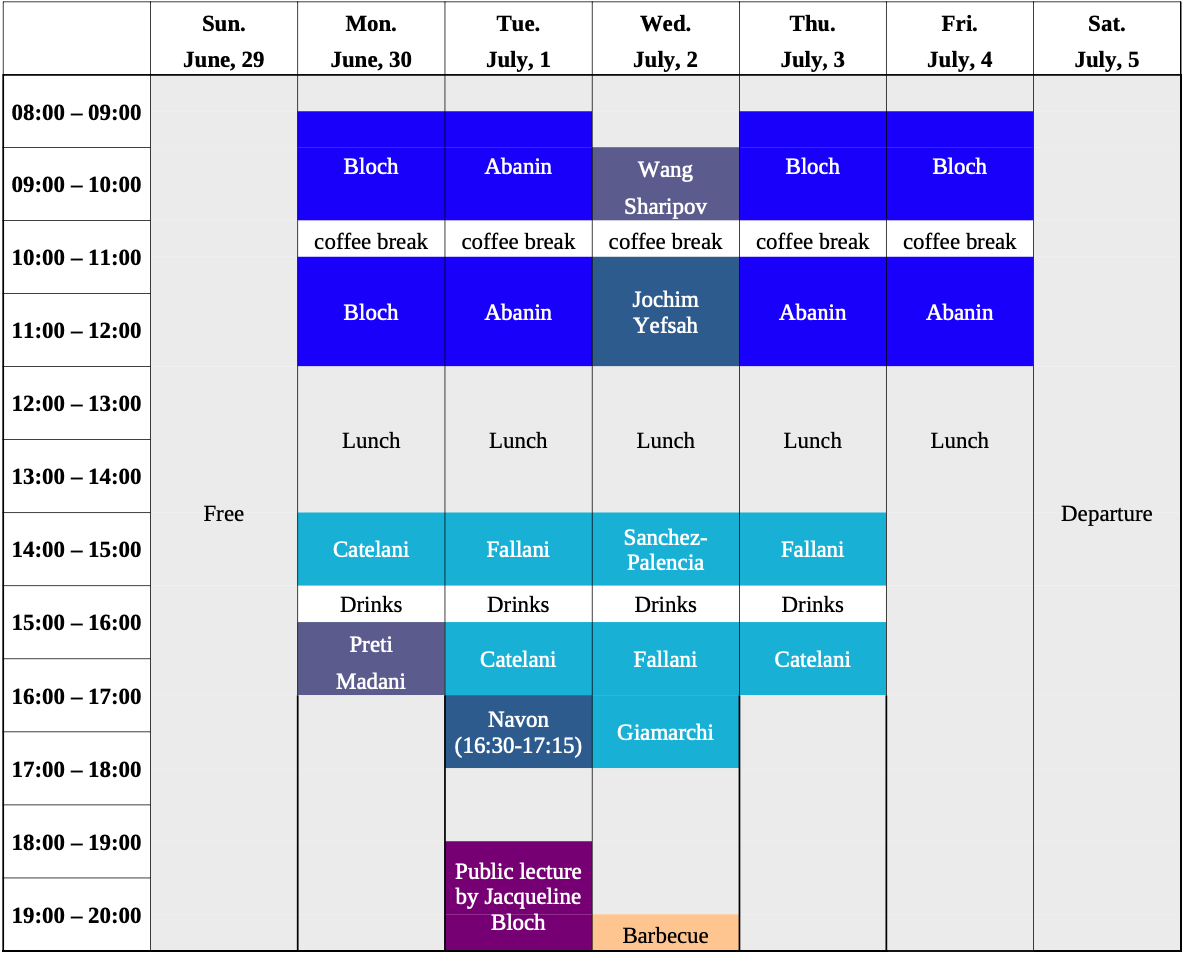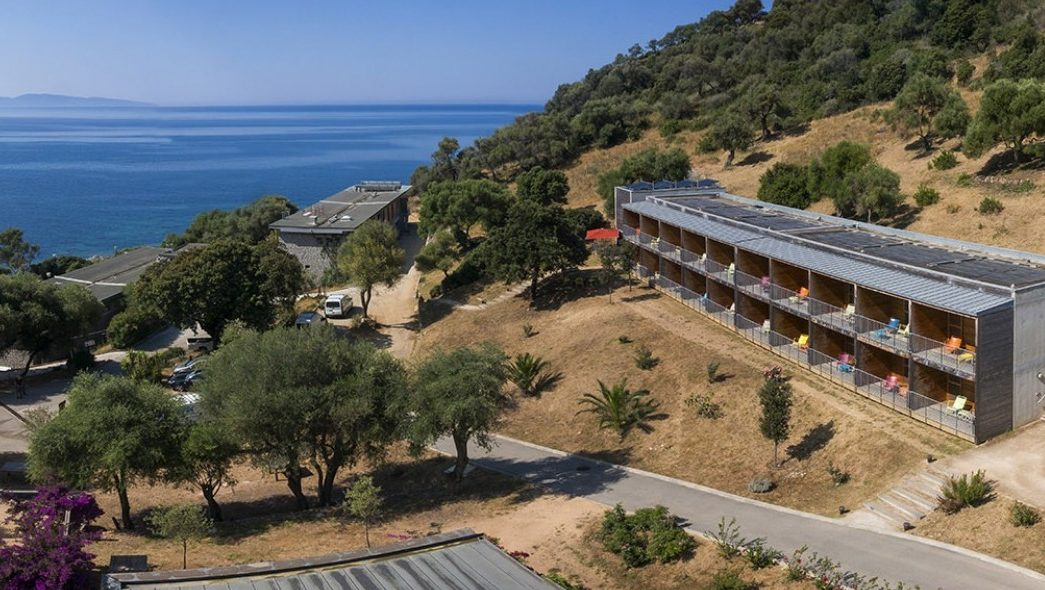Quantum Simulation in Condensed Matter and AMO Physics
Cargèse (Corsica, France) from June 23 to July 4, 2025
Shortly after the discovery of quantum theory in the first half of the 20th century, first-generation quantum technologies quickly integrated into our daily lives, with the development of transistors, lasers, and semiconductors, for example. Today, quantum technologies are experiencing a fascinating second revolution with the development of quantum devices capable of harnessing quantum entanglement to perform tasks that are impossible with classical devices. Concrete examples are already in operation, and several international companies, as well as national and supranational initiatives, are emerging to advance quantum technologies. The European Union has recently launched a pan-European flagship program worth one billion euros for their development, and France initiated a Quantum Plan launched by the Presidency of the Republic in 2021.
Quantum simulation is one of the four pillars of quantum technologies. Its goal is to develop quantum devices with a high degree of control governed by configurable Hamiltonians. Such devices can be used to solve complicated Hamiltonians beyond what is possible with classical computers. They can thus be seen as precursors to quantum computers dedicated to optimization problems. Today, there are many examples of quantum simulators using various devices in atomic physics, quantum optics, and condensed matter. The devices developed in these different fields each have their own advantages but also limitations relative to one another. No one currently knows which devices will be best suited to revolutionize computing and simulation capabilities in the emerging quantum industrial era. It is therefore urgent to develop all these areas and to build interdisciplinary bridges so that everyone can benefit from the advancements of others.
Important dates
- Deadline for application: Mon, 31 March
- Notification of acceptance: Tue, 15 April
- Deadline for registration: Sun, 25 May
- Payment of the fee: Sun, 8 June
- Conference: Mon, 23 June to Fri, 4 July 2025
Scientific committee
Francesca Ferlaino - University of Innsbruck
Antoine Georges - Collège de France
Maciej Lewenstein - The Institute of Photonic Sciences
Hélène Perrin – Laboratoire de Physique des Lasers
Païvi Torma - Aalto University
Organizing committee
Laurent Sanchez-Palencia - CNRS and Ecole Polytechnique
Thierry Giamarchi - Université de Genève
Giacomo Roati - CNR-INO and LENS, University of Florence
contact: info@qsim2025.org
Long courses
Optical lattices and Rydberg atoms
Thierry Lahaye
- CNRS, Institut d'Optique, Université Paris-Saclay
Photon cavity systems
Jacqueline Bloch
- Center for Nanoscience and Nanothechnology, University Paris-Saclay
Transport in condensed matter systems
Dimtry Abanin
- Princeton University
Open quantum systems
Sebastian Diehl
- University of Cologne
Short courses
Trapped Ions
Tracy Northup
- University of Innsbrück
Numerical methods
Andreas Lauchli
- Paul Scherrer Institute
Michel Ferrero - Ecole Polytechnique
Topological Matter
Leonardo Fallani
- Department of Physics and LENS, University of Florence
Superconducting circuits
Gianluigi Catelani - Forschungszentrum Jülich and Technology Innovation Institute
Specialized seminars
Jean-Philippe Brantut - EPFL
Giulia Del Pace - Department of Physics and LENS, University of Florence
Selim Jochim - Universität Heidelberg
Yanliang Guo - University of Innsbruck
Nir Navon - Yale University
Martin Weitz - Bonn University
Tarik Yefsah - ENS-Paris
Program - 1st week

Program - 2nd week

Contributed talks
| Farid Madani | Experimental observation of the 4D Anderson Transition with Ultracold Atoms |
| Niccolò Preti | Partially quantized currents in supersolids |
| Rustem Sharipov | Anomalous transport in classical many-body dynamics |
| Botao Wang | Anyonization of bosons |
Posters
Venue
The summer school will take place at the Institut d'Etudes Scientifiques de Cargèse. It is located on the west cost of the beautiful Corsica island in the south of France, near by the city of Ajaccio. The place enjoins a great landscape and a direct access to the sea. The wheather is usually fantastic in June and July. Information about your venue can be found on the website of the Institut d'Etudes Scientifiques de Cargèse:
Group transportation will be organised on Monday 23 June and Friday 4 July from/to Ajaccio airport.
Important points:
- Please provide in the registration your flight etc. arrival and departure times. This is important since buses will be organized to bring the participants to the center based on this information. Note that it is *highly* recommended to arrive at Ajaccio since the other airport (Bastia) is more than 4 hours by car away (don't get fooled by just km) and we will not provide transportation from this airport. Cargese is roughly 2 hours by car from Ajaccio and there is only unfrequent public transportation.
-
For arrival departure:
→ arrival on Monday June 23 around 14:00-16:00 (as much as possible)
→ departure can be either on Friday July 4 in the afternoon or Saturday July 5 morning
